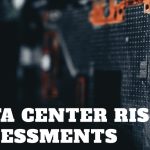A Look at Data Center Infrastructure Management
What is a Data Center
A data center is a physical facility that organizations use to house their critical applications and data. A data center’s design is based on a network of computing and storage resources that enable the delivery of shared applications and data. The key components of a data center design include routers, switches, firewalls, storage systems, servers, and application-delivery controllers.
Modern data centers are very different than they were just a short time ago. Infrastructure has shifted from traditional on-premises physical servers to virtual networks that support applications and workloads across pools of physical infrastructure and into a multicloud environment. In this era, data exists and is connected across multiple data centers, the edge, and public and private clouds. The data center must be able to communicate across these multiple sites, both on-premises and in the cloud. Even the public cloud is a collection of data centers. When applications are hosted in the cloud, they are using data center resources from the cloud provider.
Importance of Data centers
In the world of enterprise IT, data centers are designed to support business applications and activities that include
- Email and file sharing
- Productivity applications
- Customer relationship management (CRM)
- Enterprise resource planning (ERP) and databases
- Big data, artificial intelligence, and machine learning
- Virtual desktops, communications and collaboration services
Core Components of a Data Center
A data center infrastructure\design may include
- Servers
- Computers
- Networking equipment, such as routers or switches.
- Security, such as firewall or biometric security system.
- Storage, such as storage area network (SAN) or backup/tape storage.
- Data center management software/applications.
- Application delivery controllers
These components store and manage business-critical data and applications, data center security is critical in data center design. Together, they provide:
Network infrastructure: This connects servers (physical and virtualized), data center services, storage, and external connectivity to end-user locations.
Storage infrastructure: Data is the fuel of the modern data center. Storage systems are used to hold this valuable commodity.
Computing resources: Applications are the engines of a data center. These servers provide the processing, memory, local storage, and network connectivity that drive applications.
How do data centers operate?
Data center services are typically deployed to protect the performance and integrity of the core data center components.
Network security appliances: These include firewall and intrusion protection to safeguard the data center.
Application delivery assurance: To maintain application performance, these mechanisms provide application resiliency and availability via automatic failover and load balancing.
What is in a data center facility?
Data center components require significant infrastructure to support the center’s hardware and software. These include power subsystems, uninterruptible power supplies (UPS), ventilation, cooling systems, fire suppression, backup generators, and connections to external networks.
Standards for data center infrastructure
The most widely adopted standard for data center design and data center infrastructure is ANSI/TIA-942. It includes standards for ANSI/TIA-942-ready certification, which ensures compliance with one of four categories of data center tiers rated for levels of redundancy and fault tolerance.
Tier 1: Basic site infrastructure. A Tier 1 data center offers limited protection against physical events. It has single-capacity components and a single, no redundant distribution path.
Tier 2: Redundant-capacity component site infrastructure. This data center offers improved protection against physical events. It has redundant-capacity components and a single, no redundant distribution path.
Tier 3: Concurrently maintainable site infrastructure. This data center protects against virtually all physical events, providing redundant-capacity components and multiple independent distribution paths. Each component can be removed or replaced without disrupting services to end users.
Tier 4: Fault-tolerant site infrastructure. This data center provides the highest levels of fault tolerance and redundancy. Redundant-capacity components and multiple independent distribution paths enable concurrent maintainability and one fault anywhere in the installation without causing downtime.
Types of data centers
Many types of data centers and service models are available. Their classification depends on whether they are owned by one or many organizations, how they fit (if they fit) into the topology of other data centers, what technologies they use for computing and storage, and even their energy efficiency. There are four main types of data centers:
Enterprise data centers
These are built, owned, and operated by companies and are optimized for their end users. Most often they are housed on the corporate campus.
Managed services data centers
These data centers are managed by a third party (or a managed service provider) on behalf of a company. The company leases the equipment and infrastructure instead of buying it.
Colocation data centers
In colocation (“colo”) data centers, a company rents space within a data center owned by others and located off company premises. The colocation data center hosts the infrastructure: building, cooling, bandwidth, security, etc., while the company provides and manages the components, including servers, storage, and firewalls.
Cloud data centers
In this off-premises form of data center, data and applications are hosted by a cloud services provider such as Amazon Web Services (AWS), Microsoft (Azure), or IBM Cloud or other public cloud provider.






